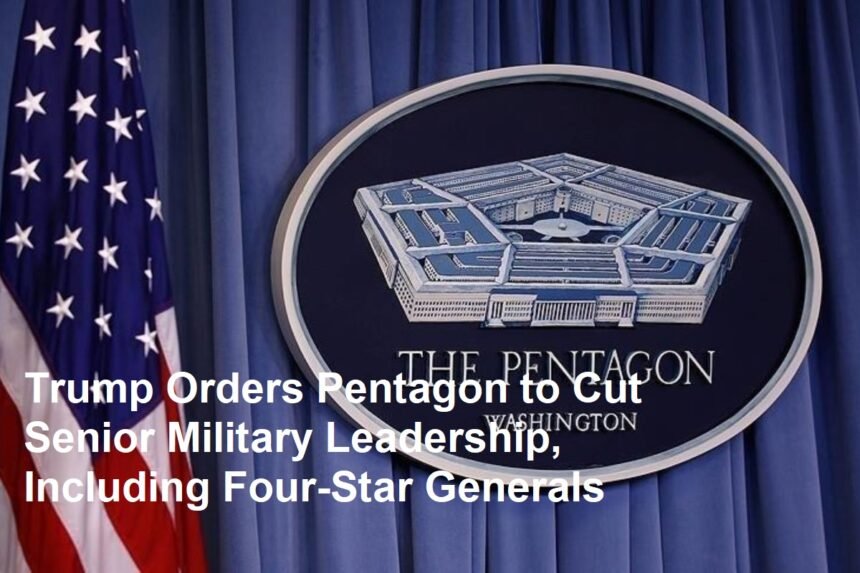In a major shakeup of the U.S. military leadership, former President Donald Trump, through his Defense Secretary Pete Hegseth, has ordered a significant reduction in the number of senior military officers, including four-star generals and admirals. This directive aims to streamline the military’s command structure, reduce what is seen as excess leadership, and reallocate resources to frontline troops.
Background and Context
The U.S. military traditionally maintains a large number of senior officers, including generals and admirals, to oversee various branches and commands. However, critics argue that the current structure is top-heavy, with too many high-ranking officers relative to the size of the force. During World War II, for example, the ratio of generals to troops was much lower than it is today.
Defense Secretary Pete Hegseth, appointed under Trump’s administration, has been a vocal advocate for reducing the number of senior officers. He argues that cutting down the number of generals and admirals will make the military leaner, more efficient, and better focused on operational readiness.
The Order and Its Details
On May 5, 2025, Hegseth issued a memo ordering at least a 20% reduction in the number of active-duty four-star generals and admirals across all military branches. Additionally, the memo calls for a 20% cut in the number of general officers in the National Guard and a 10% reduction in the total number of general and flag officers across the military.
The reductions are planned to be carried out in two phases: first targeting four-star officers and National Guard generals, followed by cuts to the overall number of generals and admirals. The goal is to remove redundant leadership positions and optimize the command structure.
Rationale and Goals
Hegseth described the cuts as a “deliberative process” aimed at maximizing strategic readiness and operational effectiveness. He emphasized that this is not a punitive measure but a necessary step to streamline leadership and shift resources from headquarters to combat troops.
In a video announcement, Hegseth coined the phrase “less generals, more GIs,” highlighting the intent to prioritize frontline soldiers over bureaucratic overhead. He pointed out that despite the military being larger during World War II, there were fewer top-ranking officers, suggesting that the current leadership structure is bloated.
Reactions and Concerns
The order has sparked debate among lawmakers and military experts. Some, like Senator Jack Reed, the top Democrat on the Senate Armed Services Committee, expressed concern that dismissing senior officers without sound justification could harm military effectiveness. Reed called for decisions to be based on facts and analysis rather than arbitrary percentages.
Others see the move as a bold effort to reform the Pentagon’s leadership and reduce bureaucracy. The cuts are part of a broader effort by the Trump administration to reshape the military, including previous firings of top military leaders and efforts to end programs seen as politically motivated.
Broader Implications
This reduction in senior military ranks reflects ongoing discussions about the size and structure of the U.S. armed forces. It also highlights tensions between political leadership and military command regarding the direction and priorities of the military.
The Pentagon’s leadership cuts are expected to have ripple effects on military operations, promotions, and career trajectories of officers. The administration argues that a leaner leadership will enhance agility and focus on emerging threats, particularly from strategic competitors like China and Russia.









